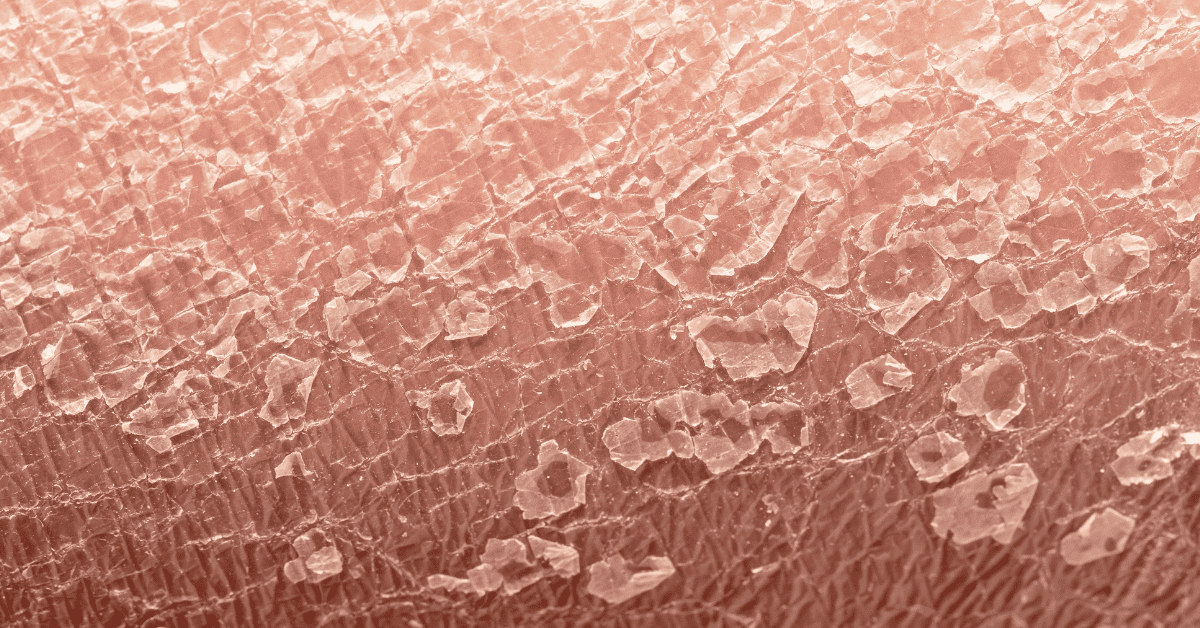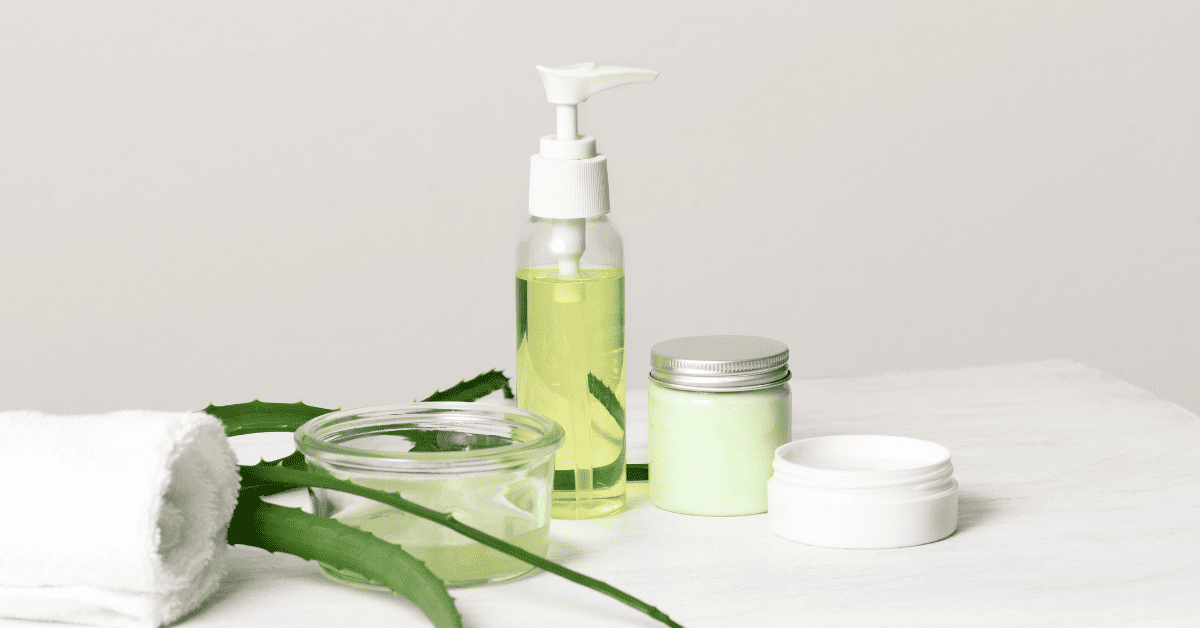Dry skin can be a frustrating symptom of Lupus… it can be itchy, uncomfortable, and unsightly. As I know first-hand, it can cause cracks in your skin. It can also make everyday activities such as showering and getting dressed, a painful experience. Besides, dry skin can be a sign you also have an underlying condition such as Sjogren’s syndrome. This is a disorder that affects your body’s ability to produce moisture.
Known as an invisible illness, lupus does have spells showing the world its true venom. The most notable way of which being skin issues like rashes and dry skin. But please know that you do not have to keep going through this discomfort… no need to keep hiding your frustration with a smile.
I understand your pain. In this article, I will provide you with practical solutions and tools. These will help you take control of your skin health and reduce the symptoms of dryness.
Follow these tips and strategies, and you can regain control of your skin health. Improve the quality of your life in the process.
– Learn How Rare is Sjogren’s Syndrome and Lupus in the UK? –

Can Lupus cause dry skin?
In lupus, the immune system attacks healthy tissue, leading to inflammation and damage. With no limits to what organ becomes the punching bag, lupus can of course affect the skin.
Lupus does not always cause skin problems. But when it does, skin dryness is one of the most common skin symptoms of lupus. This can occur because lupus can cause your skin to produce less oil, leading to dryness. Likewise, this disorder can cause your skin to lose its ability to keep moisture.
The most notorious example of how lupus can affect the skin is the butterfly rash on the face. Still, other skin symptoms include rashes of sores that do not heal… with discolouration and thickening of the skin.
Other causes of dry and scaly-looking skin
There are many factors that can cause dry skin, including:
Medications
There are several possible causes of dry skin in lupus patients. One is the use of certain medications used to treat lupus. One such example is nonsteroidal anti-inflammatory drugs (NSAIDs), which can cause dryness as a side effect. Other lupus medications that have the potential to dry your skin out include:
- Hydroxychloroquine (Plaquenil) – This antimalarial medication is a common drug for lupus patients. But it is one that can cause dry skin, itching and skin rashes as a side effect. [1]
- Methotrexate – A cancer-fighting chemotherapy drug, which is given to lupus patients at times. This medication can reduce joint pain and swelling, skin lesions and pleuritis… an infection in the tissue that lines the lungs. Yet, it also can dry your skin out. [2]
- Glucocorticoids (such as prednisone) – This is a common medication for lupus that controls inflammation. But one that can cause dry skin as a side effect. [3]
- Blood pressure medications – Some blood pressure tablets, such as diuretics, can cause dryness of the skin. They bring down your blood pressure, but they also dehydrate your body. Any time your body is short on water, the result will be dry skin. [4]
Stress
Another potential trigger of skin issues in lupus is psychological stress. Stress, which has links to lupus itself, can harm your skin by weakening its barrier function and causing water loss. This makes it difficult for the skin to heal itself after an injury. [5]
When a person becomes stressed, the level of the body’s stress hormone (cortisol) rises. This in turn causes an increase in oil production, which can lead to oily skin, acne and other related skin problems. Again, weakening your skin’s barrier function and making it difficult for the skin to heal. [6]
– Learn if stress can cause Lupus? –
The Environment
As a lupus patient, photosensitivity may be a key feature in your life. In which, exposure to sunlight can trigger a flare-up. Not only as skin symptoms like rash or tingling but also as fatigue and joint pain. [7]
In the same breath, you may understand that the harsh weather during the winter can create dry and itchy skin. For me, for example, exposure to cold weather is what causes dry skin on my hands.
Low humidity and cold temperatures can weaken your skin’s barrier and lead to dryness. Again, making it more susceptible to damage from rubbing or scratching. Besides causing your skin to produce more of certain chemicals that trigger inflammation and irritation. Making the skin more reactive to irritants and allergens. [8]
What’s more, if you live in an area with hard water, you will be drying your skin with each bath and shower you take. Especially when you add your body wash and shampoo to the equation. The surfactants in wash products, combined with the high calcium levels of hard water can end in skin barrier impairments. [9]
– Learn if Air Pollution affecting your lupus? –

Treatment Options:
Dry skin can be a frustrating and uncomfortable symptom for those living with Lupus. If you’re struggling with dry skin, it’s important to know that there are steps you can take to regain control of your skin health.
Here we will discuss some tips and strategies for keeping your skin hydrated.
#1. Topical Treatments
The number one job is to moisturise properly. That is to first choose the correct moisturiser that works for you. This is important as certain creams can make your dry skin even drier. [10][11] The second step then is to know when to moisturise.
The NHS prescribes over 100 different moisturisers, costing over £100 million a year. You can narrow these down to four main types of moisturisers: lotion, cream, gel or ointment. Science suggests that one size does not fit all… meaning no one is better than the other. It all depends on the patient… or at least it does in kids [12]
Still, many recommend you look for creams and ointments that contain little to no water. Look for ingredients such as glycerine, mineral oil, or petrolatum. Also, opt for fragrance-free and non-comedogenic moisturises. This appears to be the criteria for choosing the best moisturises for dry sensitive skin.
Furthermore, applying moisturiser straight after a shower or bath can help to lock in moisture and keep your skin hydrated.
#2. Lifestyle Changes
Knowing low humidity, low temperature and hard water can cause havoc with your skin, it makes sense to control your environment as much as you can. That is to:
- Scrap the long (10-15 minutes or more), hot baths and showers. Hot water can strip the skin of its natural oils, leaving it feeling dry and tight. Instead, opt for lukewarm water when showering or bathing. Again, slather on the moisturiser while the skin is still damp to keep water in the upper layers of the skin and decrease dryness and itching. [13]
- Be choosy with what you wash with. Choose an unscented, mild soap or non-soap cleanser to wash with in the shower or bath. On the same note, use a hand soap that contains moisturising ingredients or an alcohol-free hand sanitiser. [14]
- Buy a humidifier (or houseplants). Try using a humidifier in your bathroom to add moisture to the air. A humidifier pulls moisture back into the air, which can improve dry, itchy skin and help your skin keep hydration. Still, remember to clean it – on a regular basis. If you fancy being cost-effective, you could buy certain houseplants that can do the same job. These include the spider plant, jade plant and English ivy.
- Relax. Meditation may help with dry skin by reducing stress and anxiety which can lead to skin conditions such as eczema and psoriasis. Studies have shown that patients who practiced meditation had a significant improvement in their symptoms. However, more research is needed to confirm the relationship between meditation and dry skin. [15]
- Eat better. Promote healthy skin with a diet that has plenty of vegetables, organic produce and fish oil. Likewise, avoid gluten, white flour products and nightshades (if sensitive to them). [16] Also, drink plenty of water and include green tea each day to hydrate body cells and increase anti-inflammatory chemistry. What’s more, if you are exercising, you need more fluid. [17]
– Learn if Antioxidants are good for lupus patients? –
#3. Oral Medications
In some cases, having dry skin as a lupus patient may still be stemming from a different, underlying condition: Sjogren’s syndrome. This disorder affects your body’s ability to produce moisture. [18] In such incidents, doctors may prescribe oral medications such as methotrexate to help improve dry skin. [19]
If prednisone is not in your pill box now, your doctor could prescribe you an oral steroid. In this case, it should only last a short period of time to treat a severe flare of dry skin or eczema. This is a short-term solution though due to the potential side effects of long-term use. [20]
#4. Alternative therapies
Alternative therapies may be able to treat dry skin. These include acupuncture, herbal remedies and aromatherapy. [21][22][23] These therapies may help to reduce inflammation and improve circulation, which can be beneficial for the skin. That said, consult with a healthcare professional before trying any alternative therapies. Some may interact with other medications or have side effects.
Final Thoughts
Dry skin is a common symptom of Lupus caused by the immune system attacking healthy tissue and decreasing oil production. Medications, stress, and environmental factors can also contribute. To regain control of skin health, moisturise, meditate, and improve your diet. Also, avoid harsh soaps and hot water, and protect the skin from the sun and cold weather.
If needed, consult with your doctor to find the best treatment option for you.
Pingback: How Rare is Sjogren’s Syndrome and Lupus in the UK? -
Pingback: 84 Lupus Symptoms and Signs -